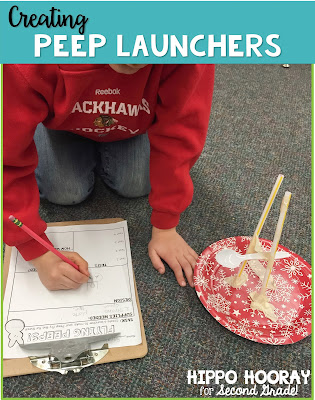My third class I ever had was pretty rough. Besides a few high needs behavior issues and a wide range of academic abilities, they struggled with social skills. Specifically working together cooperatively. As a beginning teacher, I was under the assumption that community building only happens at the beginning of the year. Boy was I WRONG! Building classroom community is something you have to do all year long. And coming back from Winter Break is the PERFECT time to start including community building into your daily routine. It will be so beneficial as we head into these next few long winter months.
With all of the standards and curriculum on our plates, it is
HARD to find the time to do
another thing in the classroom. If you're already holding a morning meeting, you can easily sneak this in during your activity time. If you don't have this time, all you really need is 5 minutes a day, two to three times a week for students to practice valuable social skills.
Since our time is at a premium, here are some of my favorite cooperative learning games that are quick and easy to implement:
1. Human Pretzel
Students work in groups of 5-6 and form a circle. Each student reaches one hand into the circle and grabs the hand of another student. Then they reach the other hand into the circle and grab a
different person's hand. Then they have to work together to untwist themselves into a circle. I do allow students to let go of hands to readjust their grips, if needed, but other than that, they have to stay holding hands.
2. Balloon Bump
Start with groups of 3-4. Students have to hold hands in a circle and work together to keep a balloon from touching the floor. They can use any part of their body except for their feet. As they get better at it, make the groups larger. Maybe you can even get your whole class to work together with one balloon!
3. Hula Hoop Balance
Borrow a few hula hoops from your PE teacher and put students into groups of 5-6. Together, they will start with one hula hoop at about nose level and using only their fingertips, they need to work together to lower the hula hoops to the ground.
4. Pass the Hula Hoop
Keep those same hula hoops and put students into larger groups of 7-10. They will hold hands and put one hula hoop in between two students. Then the students will work together to pass the hula hoop around the circle by moving it over their heads, stepping through it, etc.
5. In the Loop
You can do this in groups or as a whole class. With a long rope or piece of yarn, make a large circle in your carpet area. Students work together to get everyone sitting inside the circle. Then you repeat the activity, making the circle smaller each time.
6. Minefield
I like to borrow the plastic spots from my PE teacher for this, or you could use pieces of paper. You need 25 dots/pieces of paper to make a 5x5 grid on the floor. The teacher maps out a secret path to get from one side to another (I write it on a sticky note so I don't forget it LOL). Students line up, and one at a time, they take a step onto the spots. If it is a safe place to stand, I say nothing. If it isn't I say "boom!" and the student goes to the end of the line and the next person goes. The student keeps going until they either step on a "mine," or they get to the other side. The class works together to get everyone from one side of the mine field to the other.
7. STEM/STEAM Projects
There are SO many ideas out there for STEM/STEAM, but many of them take up a ton of time. To keep it within 5-10 minutes, I pick the ones that don't need a lot of supplies and I set a timer for no more than five minutes. Give groups of 4-5 students 20 plastic cups and tell them to build a structure. Or give them a handful of mini marshmallows and uncooked spaghetti noodles and ask them to build a bridge or a structure to hold up an object. The key is to make sure the activity is
cooperative and not
competitive, so as to create a collaborative classroom environment.
After the Game is Over...
Take the time to debrief with your class when the game is over. Ask questions like, "What went well?" or "What can we do better next time?"
Don't forget or skip over this part! This allows them to process their own actions and behavior, which reinforces good behavior and helps them to see what they can work on for next time.
If you like these ideas, check out my Pinterest board for Cooperative Learning. Not only does it have ideas for games, but also for cooperative learning strategies:





































